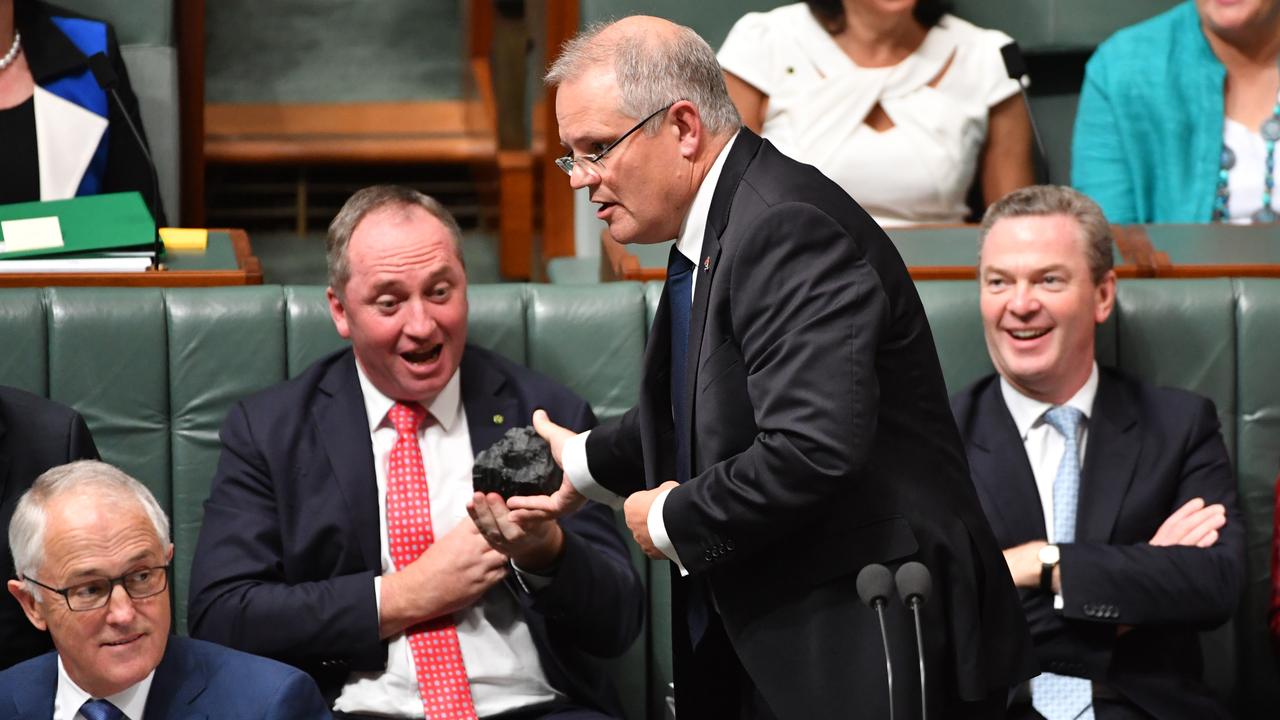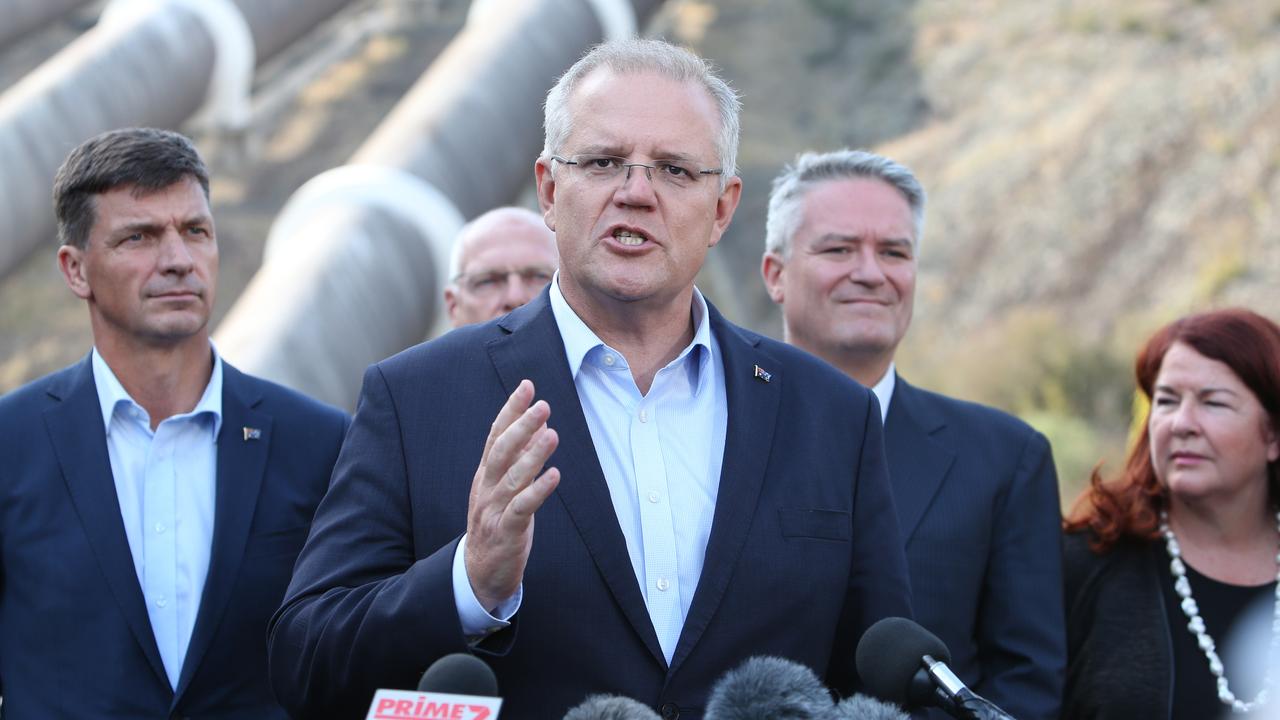What are major parties’ climate change policies?
It’s the issue that could make or break the government. Here’s what the Liberal and Labor parties plan to do on climate change.
A political battle is ramping up as all eyes turn to Scott Morrision, expecting him to call an election in the coming week after the Federal Budget is delivered.
Climate change action is likely to feature prominently at the federal election and could decide the future of a number of politicians.
We’ve seen both major parties stumble over their policies amid warnings the world only has about 10 years to act on climate change and tussles over whether Australia’s emissions are actually going up or down.
Most recently former prime minister Tony Abbott, under pressure in his electorate from independent Zali Steggall, did a backflip on his view that Australia should withdraw from the Paris Agreement.
Meanwhile you’ve got Nationals leader Michael McCormack suggesting Labor’s proposed 45 per cent renewable energy target would mean night-time sport would be scrapped.
There’s a power play going on in the Nationals as some MPs, including Barnaby Joyce, push for a new taxpayer-backed coal-fired power plant, while others in the Coalition fear the move would alienate Liberal voters in southern states who are calling out for action on climate change.
Here’s what you need to know about the major parties’ climate change policies.
ARE WE BUILDING NEW COAL-FIRED POWER STATIONS?
If Labor wins the election, no.
If the Coalition is returned, maybe.
Basically the Morrison Government hasn’t ruled out supporting coal projects as part of its Underwriting New Generation Investments program.
The program involves the government (in other words: taxpayers) taking on the risk of building new electricity generators and covering any losses if the project became a white elephant because of changes to climate policy for example.
The government has revealed it is considering 12 projects for possible government support after 66 expressions of interest were received. Others include gas and hydro projects as well as a small coal upgrade project in NSW in Lake Macquarie.
It has also singled out North and Central Queensland as having a “specific problem” because an aluminium smelter and other heavy industries around Gladstone need reliable power.
The government will provide an extra $10 million to assess the feasibility of a range of projects to see what best can meet the power needs of the region.
In particular, Mr Morrison said the government would look at whether a new “clean coal” project — a high efficiency, low emission (HELE) coal-fired power plant in Collinsville — should be supported.
Some Nationals, such as Mr Joyce, have called for the government to fund a coal-fired power station in Queensland.

But Prime Minister Scott Morrison has pointed out there is one major sticking point when it comes to building a new coal-fired power station in Queensland.
“For such a (coal) project to proceed, it would require the approval of a Queensland state government. The Queensland state government has no intention of approving any such projects,” Mr Morrison said.
“So I tend to work in the area of the practical. The things that actually can happen. And what actually can happen is the investments that we are making in renewable projects and reliable projects.”
THE GOALS
Labor continues to support a 45 per cent emissions target by 2030, and a 50 per cent renewable energy target.
The Liberal party has committed to a 26 per cent emissions reduction target by 2030.
LABOR POLICIES
Labor has unveiled a plan to force Australia’s 250 biggest polluting businesses to cut or offset emissions but will allow them to make money by selling carbon credits if they overachieve.
Major industries like steel and agriculture will be exempt. Electricity generators also won’t be covered by the mechanism, instead falling under Labor’s energy policy.
Labor’s climate change spokesman Mark Butler said the scheme doesn’t impose penalties but does require businesses to offset emissions. The policy is an extension of the coalition’s “safeguard mechanism” that limits pollution by big industries.
“There will be no carbon tax, carbon pricing mechanism, or government revenue,” Labor leader Bill Shorten said.
“(Business) don’t want to start from scratch with another mechanism … we’ve listened.”
Businesses will be able to choose the most efficient and cost-effective manner to offset emissions including by accessing international carbon markets.
Labor also confirmed it will not use the carbon credits from the earlier Kyoto climate agreement to meet Australia’s targets under the Paris agreement. Mr Shorten called the coalition’s plan to use the Kyoto credits “fake action on climate change”, saying Ukraine was the only other country to do the same.
A $300 million fund will help trade-exposed industries like steel, aluminium and cement manufacturing to remain internationally competitive.
Labor will also set a national electric vehicle target of 50 per cent of new car sales by 2030, as Australia lags behind other developed nations in adopting the new models.
It will encourage people to install solar batteries by offering $2000 rebates for 100,000 households, with a target of one million batteries by 2025.

Most significantly, it will double the amount of government financing available for clean energy projects through the Clean Energy Finance Corporation, from $10 billion to $20 billion.
Mr Shorten has also promised $5 billion to modernise Australia’s transmission network — which transports power around the country — including a Basslink cable to connect Tasmania with the mainland.
A Clean Energy Training Fund will be established to train workers in the skills they need for clean energy industries and an independent Just Transition Authority will be established to oversee the closures of coal-fired power stations in the future including pooled redundancy schemes and economic diversification plans.
Labor will also require large generators to give at least three years notice if they plan to shut down.
An independent Energy Security and Modernisation Fund will be created to upgrade energy networks and build new ones. Businesses will also be encouraged to improve productivity and efficiency so they can get more out of the energy they consume through a new Energy Productivity Agenda.
LIBERAL POLICIES
Prime Minister Scott Morrison has staked his environmental reputation on a new Climate Solutions Fund.
The 10-year fund is an extension of former PM Tony Abbott’s “direct action” Emissions Reduction Fund.
Mr Morrison has said the $2 billion fund will ensure Australia meets its 2030 emissions reduction targets without “taking a sledgehammer” to the economy.
The fund will partner with farmers, local government and businesses to deliver “practical” solutions to climate change.
Examples of projects include improving the energy efficiency of commercial and public lighting, planting trees and collecting gas that is generated in landfills from decaying organic material.

Mr Morrison has committed $1.4 billion in equity into making Snowy Hydro 2.0 — another Turnbull proposal — a reality. The huge pumped hydro project involves pumping water up a hill during times when electricity is cheap, storing it, and then releasing the water to generate power when it’s needed.
It has committed $56 million to accelerate the delivery of the Marinus Link, an interconnector to deliver power between Victoria and Tasmania.
The link is one of 12 projects short-listed for possible government support after 66 expressions of interest were received for the Underwriting New Generation Investments program. Others include gas and hydro projects as well as a small coal upgrade project in NSW in Lake Macquarie.
The program is aimed at supporting expensive energy projects to get financing.
Some National MPs are calling for the government to fund new coal-fired power plants.
They also want to push through so-called “big stick” measures to stop energy companies ripping consumers off. The government has shelved its laws for “divestiture”, which would allow the government of force the breakup of large energy companies, until after the election.

Continue the conversation @charischang2 | charis.chang@news.com.au




